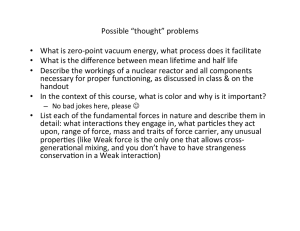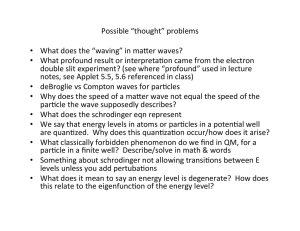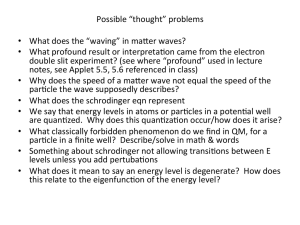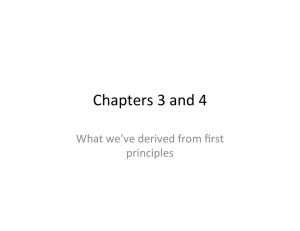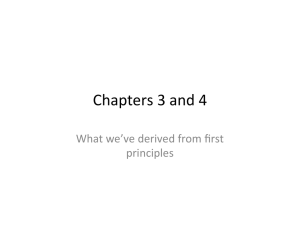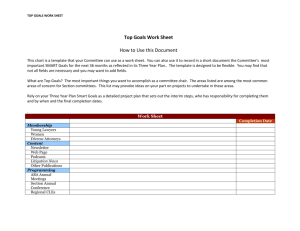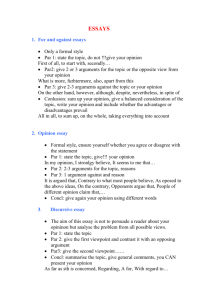Document 10456246
advertisement
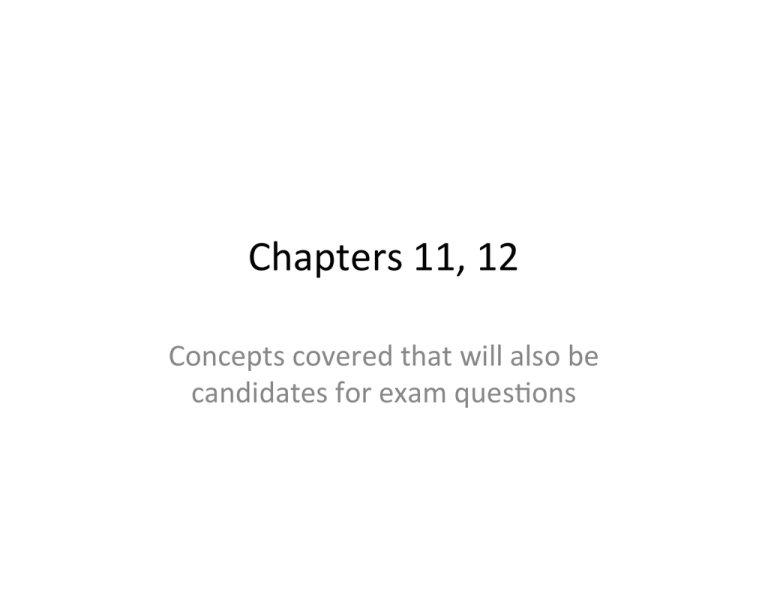
Chapters 11, 12 Concepts covered that will also be candidates for exam ques;ons • Radius of nucleus, how to find (R = R0 A1/3) • Radia;on types: alpha, beta, gamma • Exponen;al decay law, differences between TAU (τ, mean life) and T1/2 (t½, half life) • Equa;ons for the Q value or E of decay of beta decay, for e+ and e-­‐ emission • Full descrip;on of alpha decay as a QM tunneling • 2 conserva;on laws in nuclear reac;ons • Cross sec;on – how to calculate and what it implies (probability for interac;on to occur) • Fission: how it happens, why you need E input to make it happen (ie incident n’s) • Nuclear reactor components (k factor, moderator, cri;cal mass, control rods) • Fusion: how it happens, why you need E input to make it happen • Why the field is called high energy physics • How to use the uncertainty principle to determine the mass of a hypothe;cal par;cle that is the carrier of the strong force • Leptons, hadrons, fermions, bosons: what these are • Standard model: types of elementary par;cles, families, an;par;cles • 3 forces (EM, strong, weak), what par;cles they act on • Force carriers (how par;cles really interact via the exchange of par;cles that “carry” the force) and virtual par;cles • Weak force, only force to allow genera;onal mixing, only interac;on type that allows S viola;on • Conserved quan;;es in par;cle interac;ons, including color (ONLY focused on energy, mass, momentum, charge, lepton number, baryon number, strangeness, color) Chapters 11, 12 Examples done in class • E needed to remove a n from various atoms, using 2 different BE approxima;ons (in notes, not done in class) • Calculate rates of par;cle produc;on from the interac;on of a beam of par;cles with a target • Decay equa;ons for 3 types of beta decay • List of interac;ons, what force allows the interac;on • List of interac;ons, based on conserva;on laws can they happen • *** NOTE: many examples covering this material have already been done in chapters 1,2 (for example), using relaBvisBc moBon of parBcles, parBcle decays, half life, and mean life Chapters 11, 12 Suggested problems from book • Uncertainty principle in beta decays • Radii of nuclei • Radioac;vity: half-­‐life, decay constant, coun;ng rates, ac;vity, atoms in samples • E of par;cles par;cipa;ng in alpha, beta decays • Compare strength of forces, mass of force carrying par;cles • Reac;ons using cross sec;on, beam and target informa;on • Q and total E produced in fusion reac;ons • Range of alpha par;cles, decay constant/half life in alpha decays • Threshold for photodisintegra;on • E of decay products in beta decay without a neutrino being produced • Conserva;on of quan;;es in annihila;on reac;ons • Iden;fying forces that allow interac;ons to proceed, allowed & forbidden interac;ons under these forces • Conserved quan;;es in par;cle reac;ons • Given a quark combina;on, calculate the various quantum numbers of the par;cle • Given an interac;on, determine the quantum numbers and quark content of the final product • Pi0 decay in flight, angle of emission of photons • Total E of decay products in par;cle interac;ons • Time of travel for neutrinos
